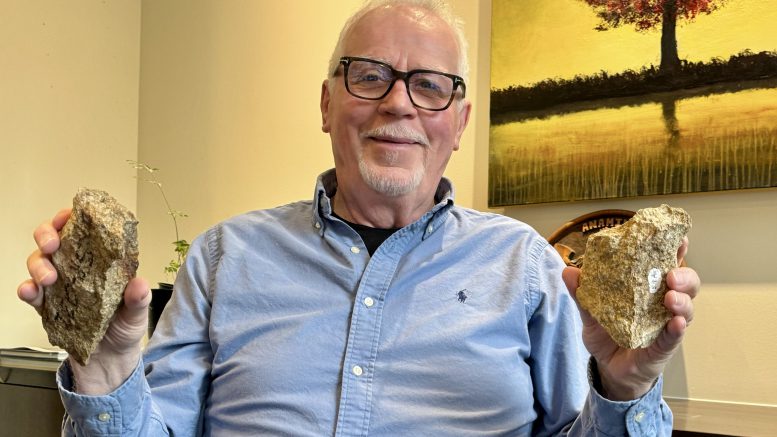The Eastern Tombstone Belt in the Yukon and Northwest Territories is gaining momentum as Cantex Mine Development (TSXV: CD; OTCQB: CTXDF), Rackla Metals (TSXV: RAK), and Fireweed Metals (TSXV: FWZ; US-OTC: FWEDF) advance projects.
While Cantex adds high-grade sulphide results to its North Rackla deposit, Rackla has started probing an overlooked geological region for gold, demonstrating the region’s emergence as an exploration frontier.
Fireweed on Thursday reported high-grade zinc from drilling its Macpass project in the Tombstone-Tungsten gold belt to the north. The results showed potential to significantly grow resources at the Tom target. Macpass covers 980 sq. km and is prospective for reduced intrusion-related gold system (RIRGS) mineralization.
NWT discovery
Rackla made strides on its Grad property in the months since staking it in July. In a rare event, the NWT government lifted land-use restrictions. Initial exploration identified the BiTe zone, where a 550-metre-wide anomaly of gold and bismuth has emerged as a promising RIRGS system.
Grab samples taken in the months after staking showed up to 92 grams gold per tonne, with consistent grades exceeding 1 gram gold, and a channel sample showed 1.8 grams gold over 38 metres. Founder and CEO Simon Ridgway tells The Northern Miner the results reveal a “robust system.” The bismuth and tellurium values show “strong pulses,” which support the RIRGS model.
“The fact that we’re getting 2% bismuth and strong tellurium with the gold tells me it’s a very, very strong pulse,” he said this week in Vancouver over a sushi lunch in his office boardroom.
The BiTe zone discovery followed a helicopter rollover, which disrupted Rackla’s short field season. No injuries occurred, and samples collected near the crash site revealed gold mineralization, leading to the identification of the anomaly.
Ridgway described the mountainous property’s potential as significant, citing parallels with Snowline Gold’s (TSX-V: SGD; US-OTC: SNWGF) success at the Rogue project in the Yukon.
“This system is strong, with mineralization spread throughout the intrusion. It’s the kind of discovery that’s rare to find,” Ridgway said.
Ridgway says that the Yukon’s regulatory environment has tightened following the Victoria Gold Eagle mine incident, with First Nations demanding stricter permitting. In contrast, the NWT recently opened new lands for exploration, signalling a more mining-friendly stance.
Doubling strike
Cantex said in a release late Wednesday it had completed 33 drill holes totaling 6,000 metres at its North Rackla project, 150 km northeast of Mayo, Yukon. Drilling extended the strike length of the Main zone’s massive sulphide mineralization to 2.65 km, up by 300 metres this season.
Results included a 2.4-metre interval grading 25.82% combined lead-zinc. This was within a broader 13.6-metre zone at 7.25% lead-zinc. Also, there were 2.1 metres at 27.63% lead-zinc within 6.4 metres at 13.91%, the company said.
Higher copper values in the northeast of the Main zone suggest it could be the deposit’s feeder. This may double its strike length, the company said.
The company will soon release the germanium results from the reported intervals. It will also release the complete results from 12 holes drilled at the Main zone.


Be the first to comment on "Far north Tombstone Belt gains exploration traction with Cantex, Rackla progress"